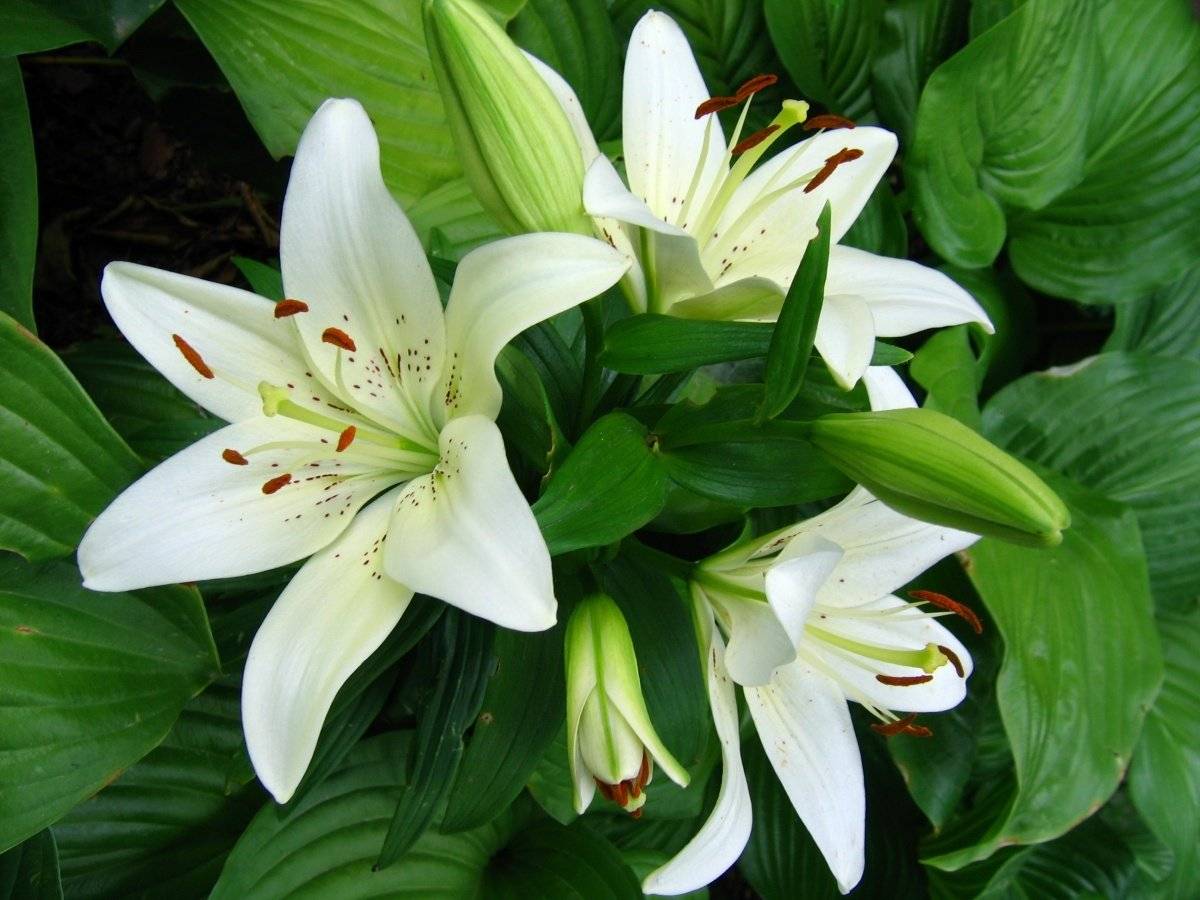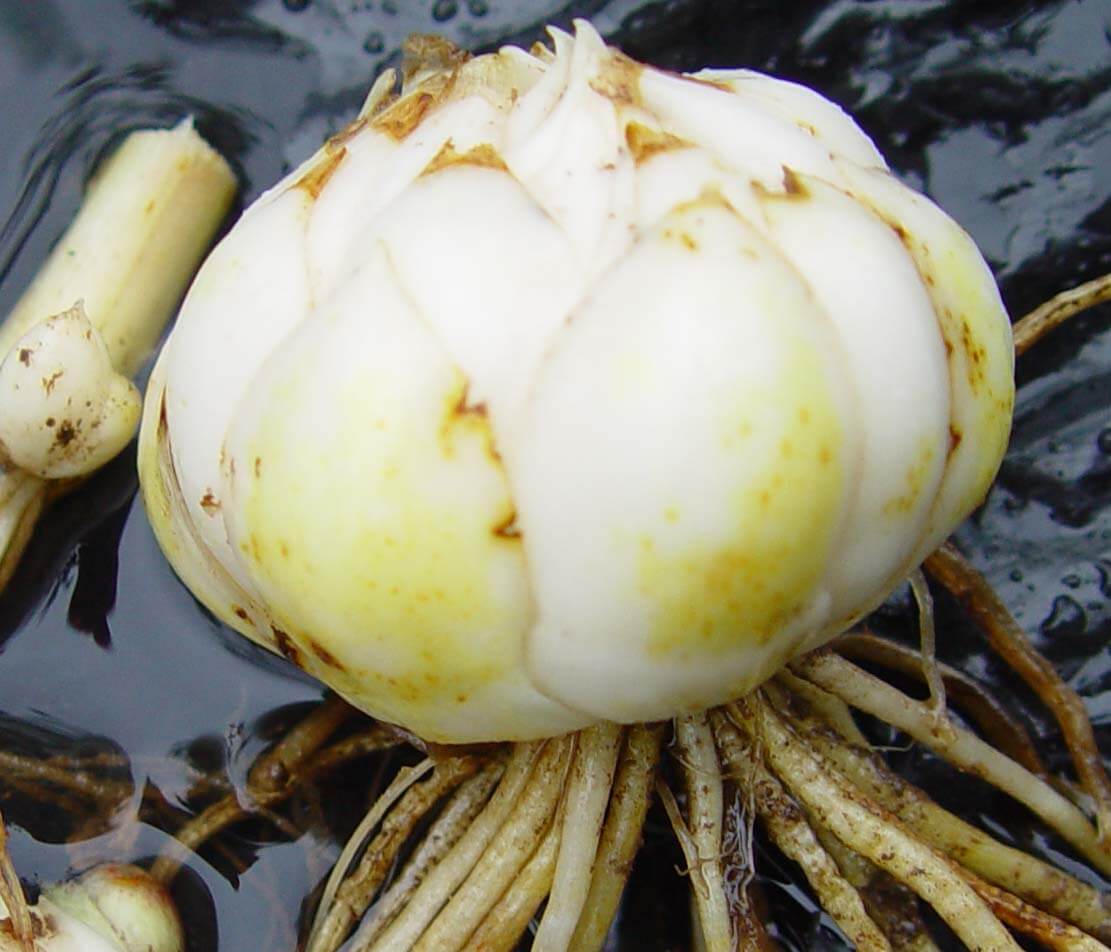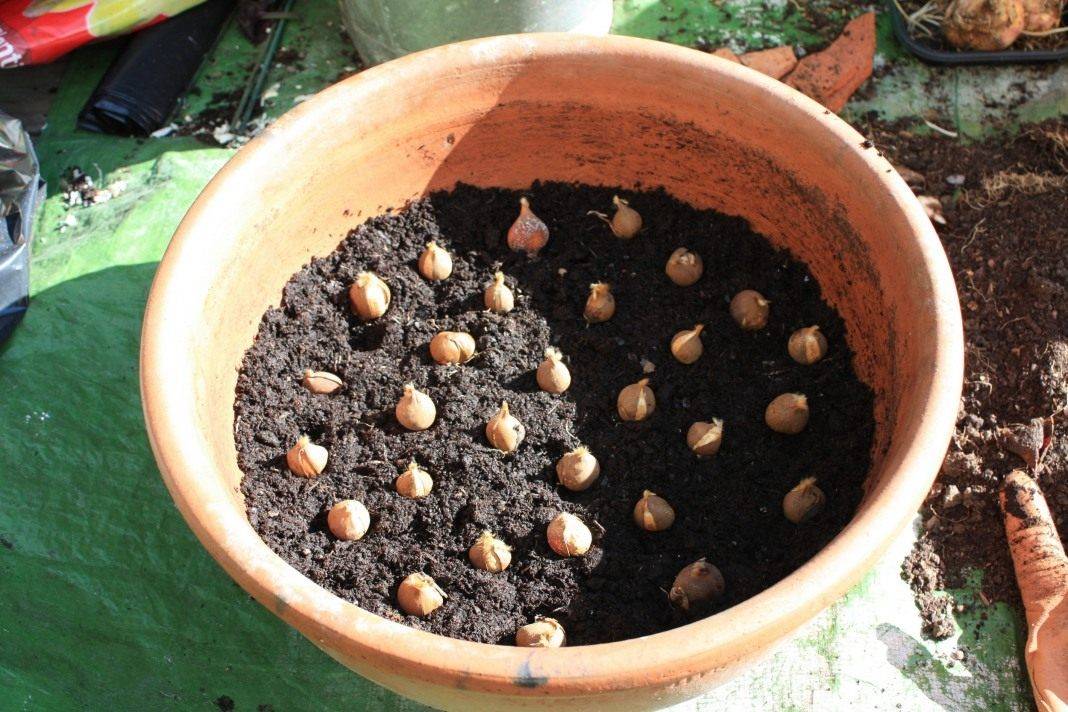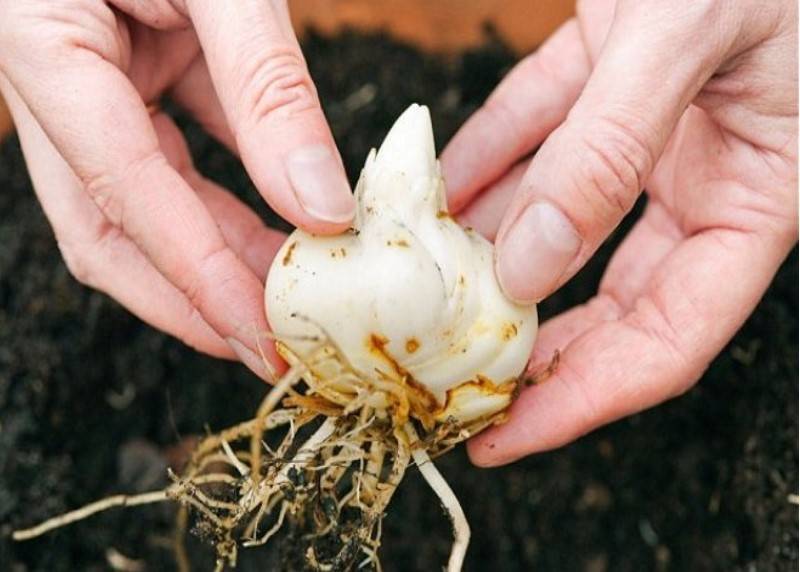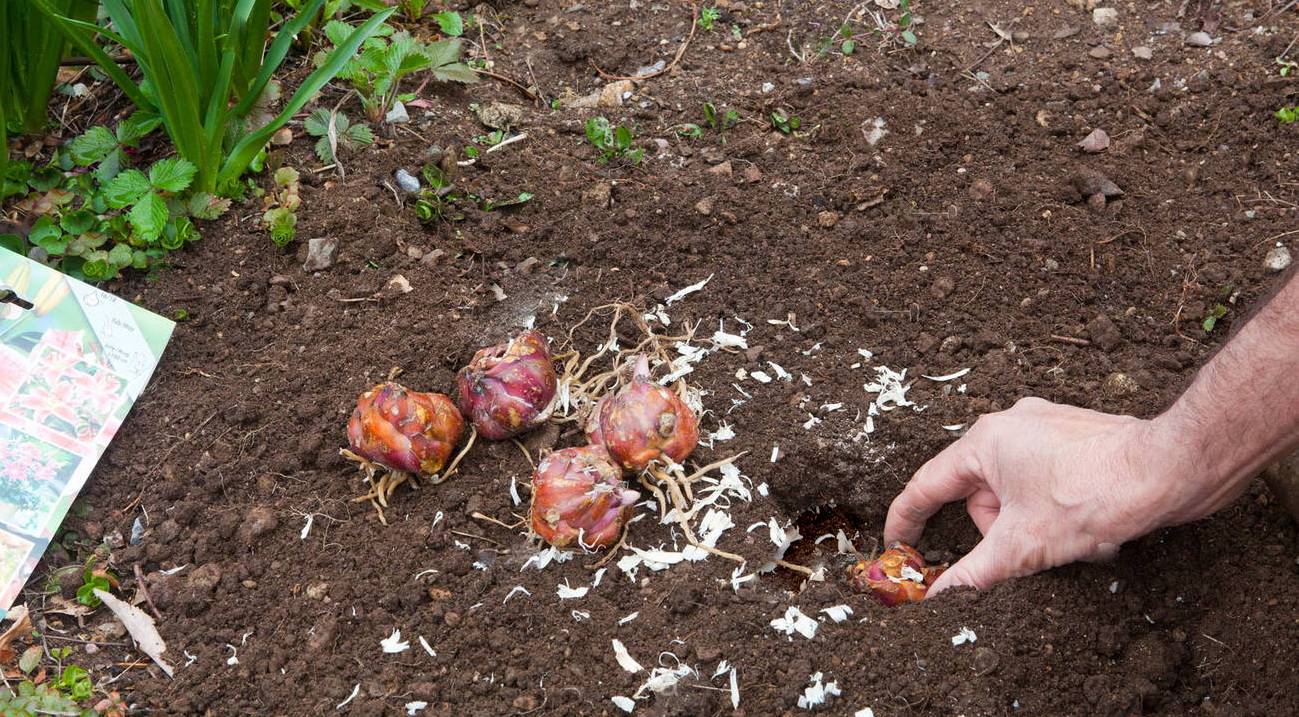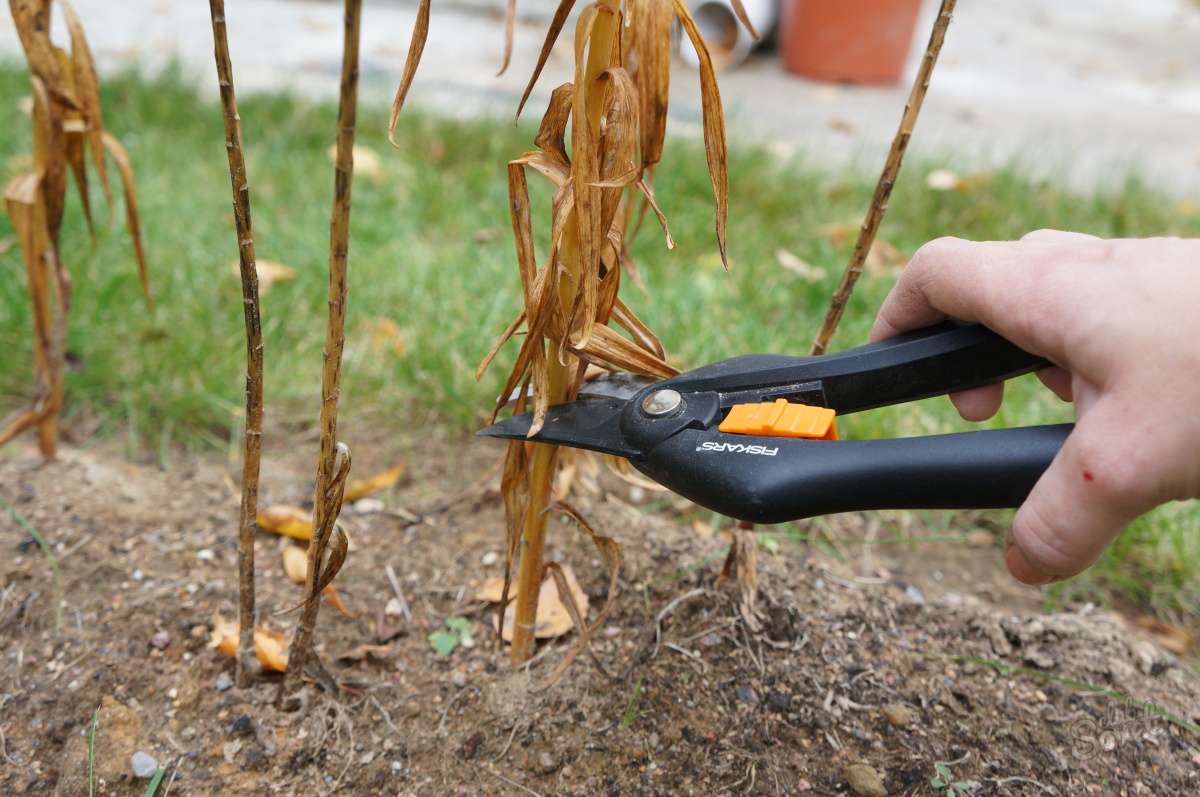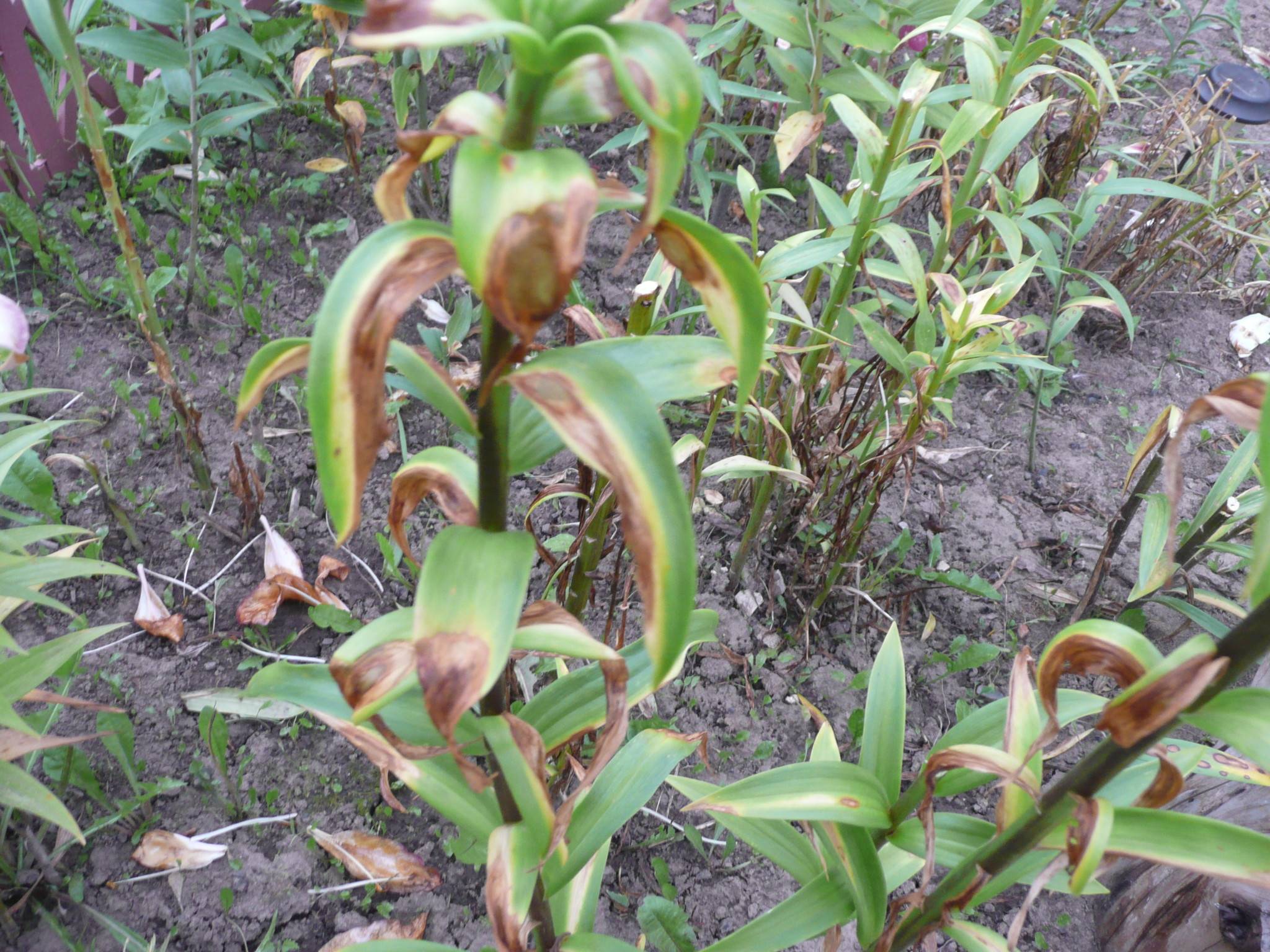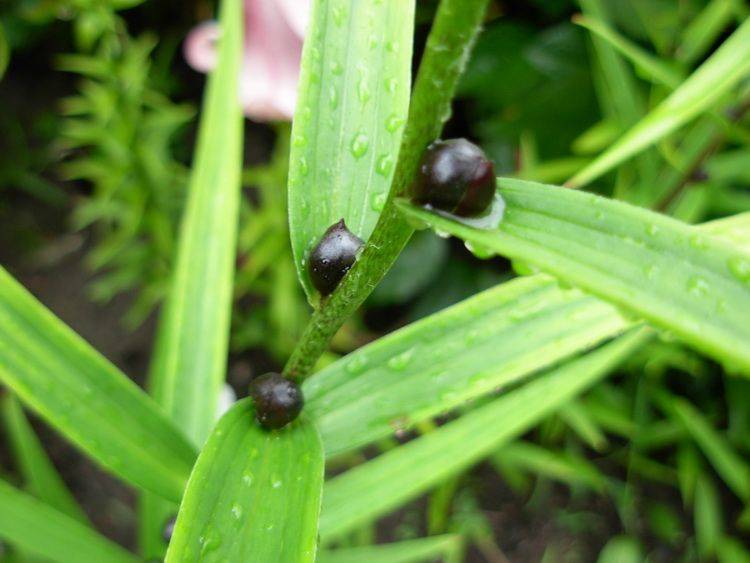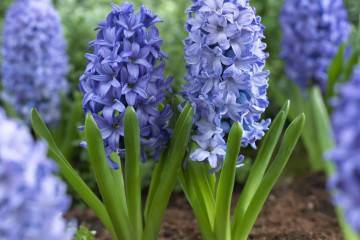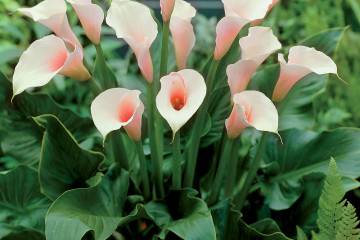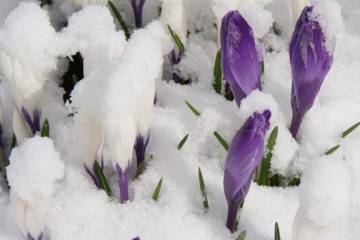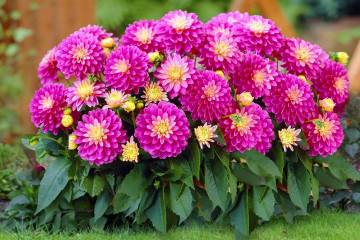Lilies - planting and care in the open field
Content:
- Bulb selection
- Planting material processing
- Growing lily seedlings (preliminary early planting of bulbs in a pot)
- Lily from seeds: cultivation and features
- Transplanting and dividing bulbs
- Site preparation
- How to plant lilies correctly
- Caring for lilies in the garden
- Features of growing lilies in the Urals and Siberia, in the northern regions of Russia
- Lily diseases
- Reproduction of lilies
A striking representative of the plants of the Liliaceae family is the perennial bulb lily. Many legends and traditions are associated with it, writers and poets described it, used in heraldry. In ancient Greece, the white lily was considered to be drops of milk of the goddess Hera, and in Christianity it is a symbol of the Mother of God. To get beautiful flowers in a flower bed, you need to know how to care for lilies.
Bulb selection
Lily bulbs need to be harvested depending on the variety and region. Before ordering a variety, you need to familiarize yourself with the features of the selected variety, find out if it is a hybrid and which one, in order to make sure whether it is suitable for a given area and how to care for it.
How to choose healthy bulbs:
- the bulb must be firm and dense;
- it should not be stained, rotten scales, mold;
- the roots of the bulbs must be alive and longer than 5 cm;
- if the bulb is purchased in the spring, then it should have a small sprout;
- it is better to buy bulbs immediately after they go on sale and store them yourself;
- when buying in the fall, the bulb should have a small hole or spot from the cut peduncle.
Planting material processing
Bulbs purchased in winter should be stored in the refrigerator until the beginning of the planting period, wrapped in moist moss. Store in a vegetable drawer wrapped in a perforated plastic bag, while fruits or vegetables are best placed separately or tightly wrapped in a bag.
The bulbs will germinate; with a sprout length of 5-6 cm, they can be planted in open ground. If the time has not come yet, then you can put it in a pot and leave it on the balcony or in a cool place.
The bulbs must be soaked for 20 minutes before planting. in a solution of potassium permanganate.
Growing lily seedlings (preliminary early planting of bulbs in a pot)
Lily seedlings are grown if the bulbs begin to germinate before planting or if they need to be rooted and made stronger.
Preparation of bulbs for seedlings consists of the same steps as preparation for planting in open ground. You need to clean them of dirt, remove dry leaves, soak in a solution of potassium permanganate, plant in a translucent container, but you can also in any pot. It is necessary to make drainage holes at the bottom and side. It is not recommended to plant the bulb deeply; after planting, it is necessary to water it abundantly with water and a solution against diseases.
Further, watering is necessary as it dries, about once every 5-7 days, no feeding is required.
Lily from seeds: cultivation and features
In addition to bulb planting, this flower can be propagated by seed.
Sowing with seeds has several advantages:
- more plants grow at less cost;
- the plants are healthier and more powerful;
- better adapted to the climate;
- it is easier to get new hybrid forms.
How and when to plant lilies by seeds
Seed germination is high, but it is better to plant fresh seeds that have been stored for 1-2 years. Depending on the variety, the rate of seed growth fluctuates.
Seeds should be planted sparsely to avoid further picking, the rows should be at a short distance from each other, about 20 cm. They are sown in October or April.
With a small amount of seeds, they can be sown in boxes, and after germination, transplanted into open ground. Seedlings can be left in the greenhouse, rooted, and then transplanted to a permanent place. In the fall, the beds need to be insulated with humus, and additionally covered with leaves for the winter.
Transplanting and dividing bulbs
When lilies grow for a long time in favorable conditions in one place, they can grow, so they need to be divided. Also, despite the fact that the lily is a perennial plant, long-term growth in one area can adversely affect the flowers. Every year they will be smaller and smaller, and the plant itself will be less strong.
It is better to replant in August, when the flowering has passed. First you need to cut the stems, leaving 3-5 cm. The bulbs should be dug out very carefully so as not to damage the root system. Better to do this with a garden pitchfork.
Then you need to carefully inspect the dug out bulbs, they must be even, without damage. You should clean them of dirt and cut off the roots, leaving a length of 10-15 cm. If there are a lot of bulbs, they form so-called nests, you need to carefully separate them with your hands, sometimes they fall apart on their own. Before transplanting, the bulbs must be soaked in a solution of potassium permanganate and, without drying, planted in the ground.
You need to plant to a depth of three times the size of the bulb itself. The distance depends on the type of lily and the size of the adult bush.
Site preparation
The place for planting lilies should be as favorable as possible, since the plant can grow in one place for about 5 years. The soil should be loose, well-drained and moist.
Correct soil preparation
Before planting, the soil must be dug, at least 40 cm deep. Peat and sand can be added to the soil, depending on the type of soil. After processing, you need to add fertilizers (humus, manure). Depending on the type of bulb, it is recommended to add additional substances, as some varieties like acidic soils, while other hybrids prefer slightly acidic ones, so you need to add additional ash, chalk or limestone.
Sometimes they do it even easier: they construct an artificial drainage, cover it with peat and fill it with potassium permanganate. After that, you can start planting.
How to plant lilies correctly
In order for lily flowers to bloom on time and delight with their flowering for a long time, you need to determine which climatic zone the area belongs to, and select suitable hybrids and varieties. You also need to take into account the amount of time before the onset of cold weather:
- Middle lane (Moscow region) - planted mainly in September;
- south (Krasnodar Territory) - planted in October;
- Siberia, Ural - planted in August or early September.
Caring for lilies in the garden
The lily needs special care, you need to feed the plant and water it correctly.
If the flower is young, then the first feeding should be done after flowering with potassium-phosphorus fertilizer. The plant, which is about 2-3 years old, needs to be fed after the snow melts with nitrogen fertilizers, for example, saltpeter. The second feeding is carried out during the period of bud formation, and the third one immediately after flowering.
Watering lilies should be moderate so that there is no stagnation of water, as this can lead to rotting of the bulbs. Abundant watering is needed in April-May, when the plant is just gaining strength, and after flowering, in order to accumulate nutrients and gain strength for wintering.
For bouquets:
- you can cut stems that have more than 5 buds. This is a sign that the plant is strong and has reached the size for further development;
- cut to a height of 20 cm from the ground so that nutrients do not stop flowing to the bulb;
- make a cut with a sharp knife or pruner at an acute angle so that water does not get deep into the stem;
- for the healing of the stem and possible further decay, it is necessary to treat the cut with ash.
To prepare the plant for winter, it must be pruned, but only after it is completely dry. Leave the stem 10-15 cm high, cut everything else with a sharp knife or pruner.
Caring for lilies after flowering
After flowering, you need to cut off the buds, wait until the plant is completely dry and cut off the stems, leaving 10-15 cm from the ground.
It is not necessary to dig the bulbs out of the ground; they winter well in the soil. You need to dig up whimsical varieties or in regions with a harsh climate, in other cases it is enough to insulate the bulbs with foliage.
If the bulbs are still dug up, then they must be treated in a fungicide solution, then dried, separate the young baby bulbs from the large ones and stored in a dark place in moist sawdust.
Features of growing lilies in the Urals and Siberia, in the northern regions of Russia
When growing lilies in harsher conditions, you need to choose the right variety. In cold climates, lilies bloom later than usual, it is better to buy Asian varieties, which are considered cold-hardy and less whimsical, oriental and tubular. Whether or not to dig up lilies for the winter depends on the average temperature for most of that time of year.
Lily diseases
Lily is a rather unpretentious plant, but insects, improper care can adversely affect the health of the flower. Below are common diseases and parasites, as well as ways to deal with them:
- lily flies. They lay eggs in unopened buds. When the larvae appear, they feed on the stamens and petals. That is why the buds of lilies fall off without blooming. In order to avoid damage to the plant, it is necessary to treat the buds from pests immediately after ripening. Treatment includes several measures at once - spraying, processing inventory and removing damaged parts of the plant;
- gray rot. Sometimes brown or red spots appear on the leaves, this disease is called botrytis. The fungus enters the plant and multiplies well in wet weather.To avoid the disease, you need to spray the plant with zircon, often loosen the soil. If it is acidic, then treat it with a solution of potassium permanganate;
- excess moisture, nitrogen deficiency is the answer to the question of why the leaves of lilies turn yellow or begin to fall off. To avoid plant death, it is best to apply fertilizer when the plant is planted. It is also important to observe moderate watering, then the lily will not shed its leaves.
Reproduction of lilies
Reproduction of lilies is possible using cuttings, scales or bulbs. Each is good in its own way:
- propagation by cuttings. It is necessary to separate the young shoot, plant it in the ground to a depth of 5-7 cm, cover with a plastic bottle. After the appearance of buds and roots, the bottle is removed;
- reproduction by scales. The scales should be separated from the bulbs, soaked in potassium permanganate, dried and folded into a bag, then stored in a dark place for 5-6 weeks, until the first bulbs appear. Then they are transplanted into boxes or directly into open ground;
- propagation by bulbs. Bulbs are buds in the leaf axils. In August, after flowering, they are separated from the stem, planted to a depth of 1-2 cm at a distance of 3-5 cm. The germinated seedlings are placed in a dark place.
Lilies are very beautiful flowers that gardeners love so much. There is a wide variety of shades, types, varieties of this plant. They bloom almost all summer, are quite unpretentious, but require certain rules of care. If you want to plant this variety, it is important to know: how to propagate lilies, when to dig up lilies, how to feed them, what to do next if the lilies have faded. In order for the flower bed to please the owner with its flowering, it is important to study the description of the variety when choosing flowers in order to take into account the neighborhood, color combination and care. You can grow home lilies for flowering in a flower bed in the country, or you can cut them into a vase and bouquets.
